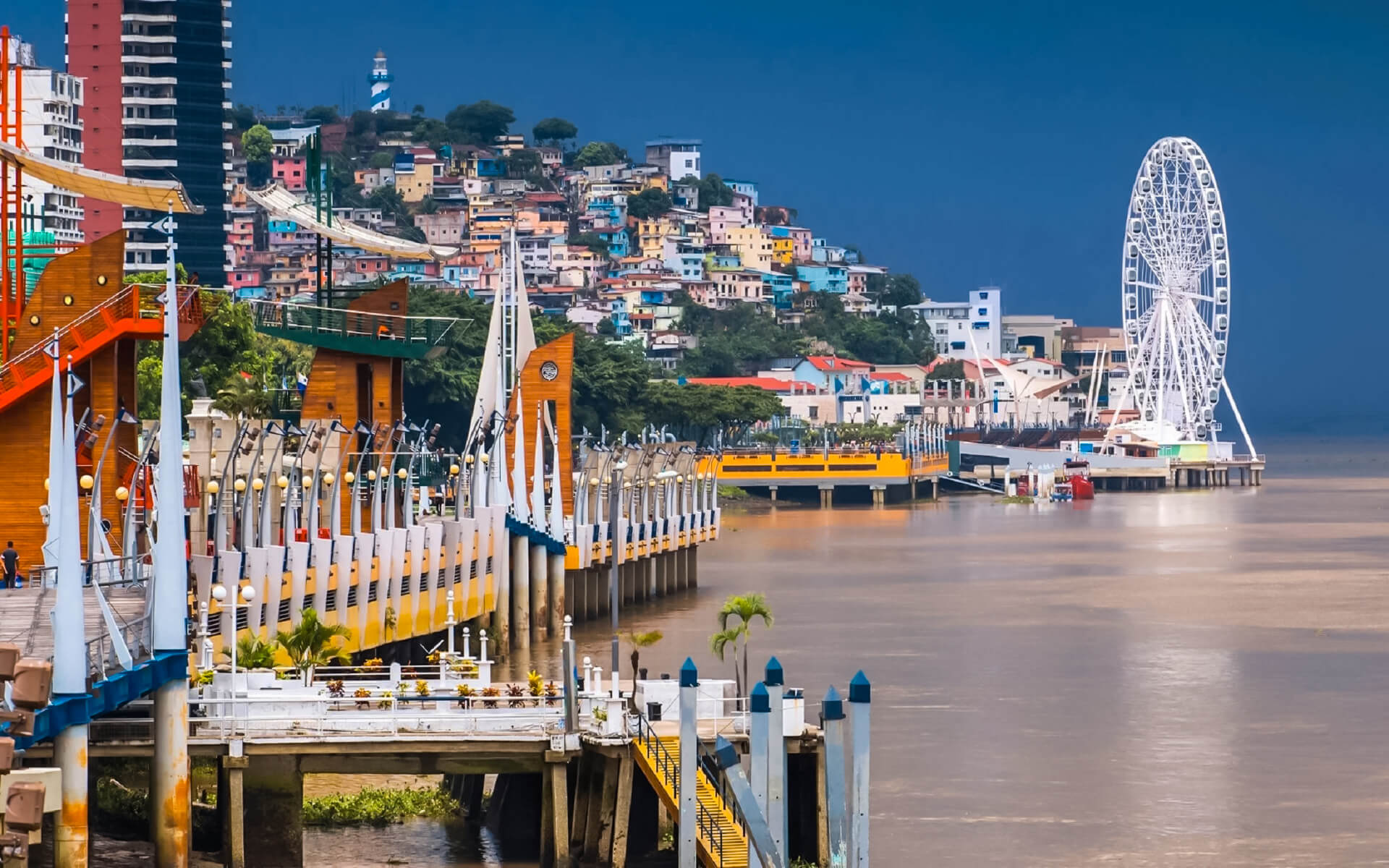The international bus terminal and the new business district core are both close to the newly constructed José Joaqun de Olmedo International Airport, which was chosen as the finest airport in South America. Flights to New York, Miami, Houston, Buenos Aires, Caracas, Madrid, Amsterdam, Lima, Bogota, Panama City, San José, San Salvador, etc. are available from this airport. There are also new flights four times per week to Cali and twice per week to Medelln, Colombia. Not every flight has a non-stop leg. The cost of a taxi from a hotel in the northern suburbs to downtown, where the most of the attractions are, should not exceed $3. A new international airport is now being planned to be built around 20 minutes from Guayaquil, close to Daular.
The cheapest spot to fly from if you want to visit the Galapagos Islands is Guayaquil. You may travel between the Ecuadorian mainland and the Galapagos Islands on three different airlines. Flights from LAN-ECUADOR, Aerogal, and TAME are nonstop every day. It is less expensive to depart from Guayaquil than from Quito because it is closer and most Quito planes do stop at Guayaquil’s airport to refuel and pick up passengers. Take shoes if you’re visiting the islands; cabs aren’t available there. Examine the boundaries. Walking is required everywhere.
Guayaquil recently raised its international departure airport charge, which is now precisely $29.75. (January 2010). The airport in Quito is around $15 more expensive.
The largest port in Ecuador is located at Guayaquil. From here, you may go to the Galápagos Islands and other places.
Cruz del Sur operate international bus services to and from Peru.
Within the city the local bus system is confusing but the locals will help you get where you want to go. It is also the cheapest way to get around the city as there is no metro system. For women it is safest if you sit at the front near the driver, but don’t be alarmed, the bus is a safe way to travel around Guayaquil.
Guayaquil’s bus terminal is well organized, but still keep an close eye on your belongings. There are frequent connections to almost every destination in Ecuador. Keep your items close to you during the midnight check points. The police will steal valuables when the men leave the bus to be checked for weapons; this occurs on night busses around Ecuador.
Your horn is your best buddy if you’re driving. Be careful since there are many aggressive drivers in the city, but if you are constantly on the alert, you won’t go anywhere. Service at gas stations is complete.
Just outside the airport, you may hire a car for about $35 per day. One of the most affordable yet reputable businesses is Carmax.


